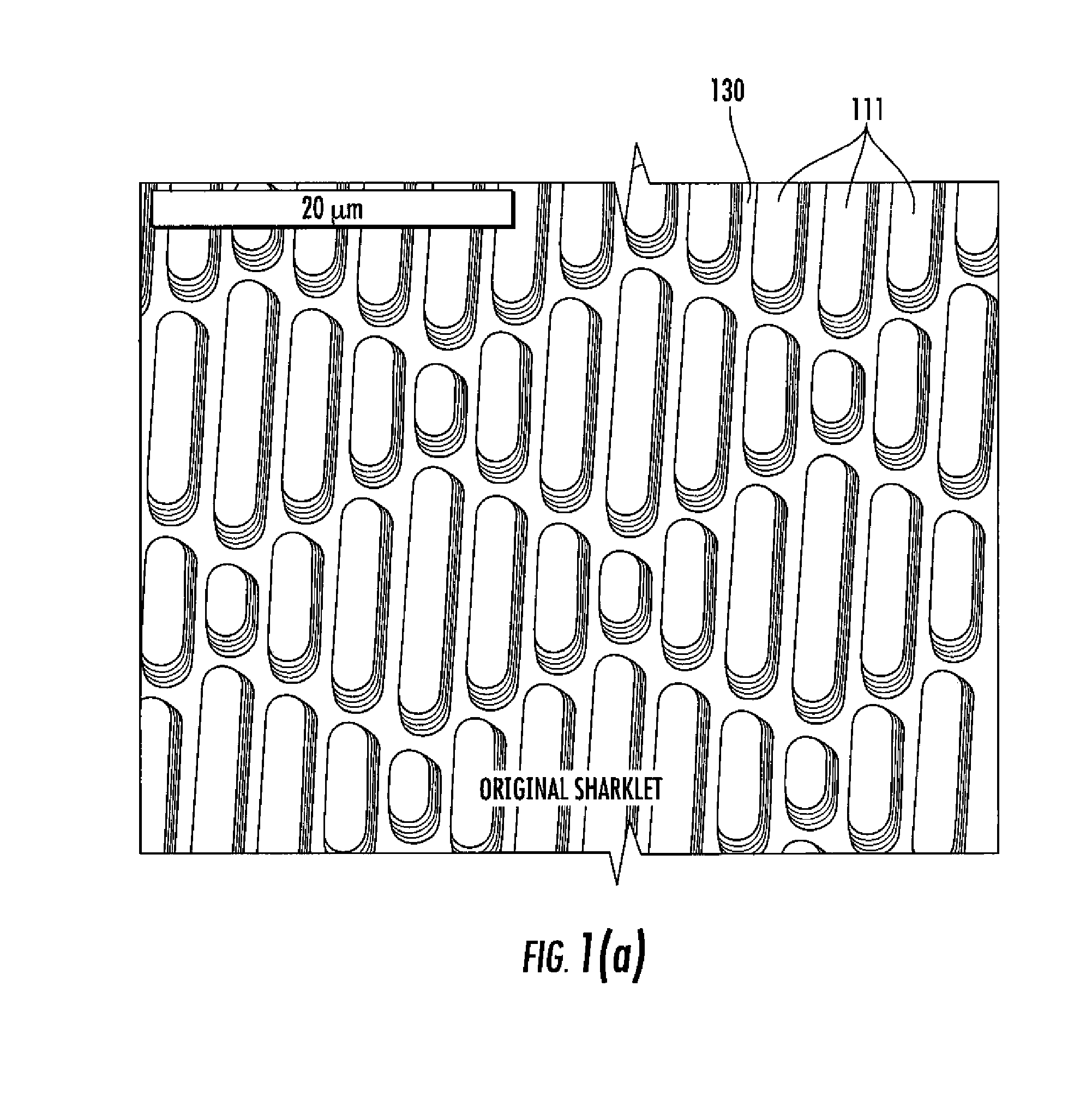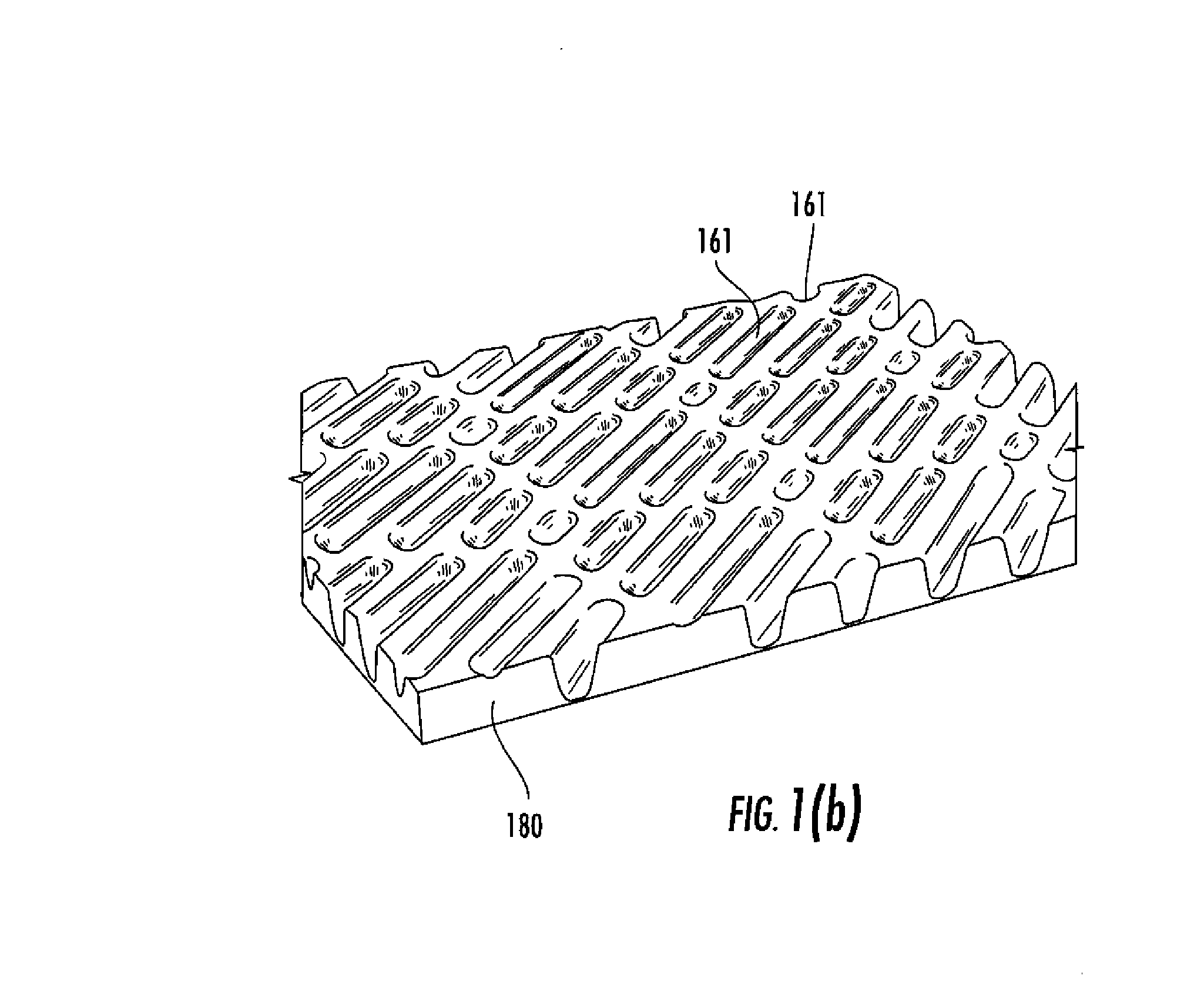Surface topographies for non-toxic bioadhesion control
a bioadhesion control and surface topography technology, applied in the field of non-toxic bioadhesion control surface topographies, can solve the problems of increasing the hydrodynamic drag of the u.s. navy, increasing the range, speed and maneuverability of naval vessels, and increasing fuel consumption by up to 30-40%
- Summary
- Abstract
- Description
- Claims
- Application Information
AI Technical Summary
Benefits of technology
Problems solved by technology
Method used
Image
Examples
examples
[0103] It should be understood that the Examples described below are provided for illustrative purposes only and do not in any way define the scope of the invention.
[0104] An experiment was performed to compare the performance of an exemplary surface architecture according to the invention having features formed from a PDMS elastomer as compared to a planar uncoated control surface (the same PDMS elastomer) against bioadhesion of algae spores. The inventive surface topography was the Sharklet shown in FIG. 1(a). Following 45 minutes of exposure, as shown in FIG. 8(a), the settlement density of algae spores on the smooth control sample was about 720 / mm2, while the settlement density for the surface architecture according to the invention was only about 100 / mm2, or only about 15% of the settlement density of the control. FIG. 8(b) is a scanned light micrograph image of the surface of the control, while FIG. 8(c) is a scanned light micrograph image of the surface of the surface archi...
PUM
| Property | Measurement | Unit |
|---|---|---|
| Length | aaaaa | aaaaa |
| Length | aaaaa | aaaaa |
| Length | aaaaa | aaaaa |
Abstract
Description
Claims
Application Information
 Login to View More
Login to View More - R&D
- Intellectual Property
- Life Sciences
- Materials
- Tech Scout
- Unparalleled Data Quality
- Higher Quality Content
- 60% Fewer Hallucinations
Browse by: Latest US Patents, China's latest patents, Technical Efficacy Thesaurus, Application Domain, Technology Topic, Popular Technical Reports.
© 2025 PatSnap. All rights reserved.Legal|Privacy policy|Modern Slavery Act Transparency Statement|Sitemap|About US| Contact US: help@patsnap.com



